10 start with N start with N

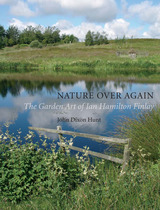
An accomplished Scottish poet, writer, artist, and gardener, Finlay infused his garden designs with his distinct aesthetic philosophy and poetic sensibility. John Dixon Hunt situates his analysis of Finlay’s gardens in the context of that broader philosophy and poetic work, drawing on Finlay’s writings about the art and practice of garden design. From the Max Planck Institute in Stuttgart to the University of California at San Diego campus, the book documents how Finlay built an oeuvre of international renown—ultimately arguing that Finlay’s innovations are best understood in the context of the long tradition of European gardens.
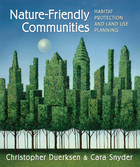
Nature-Friendly Communities presents an authoritative and readable overview of the successful approaches to protecting biodiversity and natural areas in America's growing communities. Addressing the crucial issues of sprawl, open space, and political realities, Chris Duerksen and Cara Snyder explain the most effective steps that communities can take to protect nature.
The book: documents the broad range of benefits, including economic impacts, resulting from comprehensive biodiversity protection efforts; identifies and disseminates information on replicable best community practices; establishes benchmarks for evaluating community biodiversity protection programs.
Nine comprehensive case studies of communities explain how nature protection programs have been implemented. From Austin and Baltimore to Tucson and Minneapolis, the authors explore how different cities and counties have taken bold steps to successfully protect natural areas. Examining program structure and administration, land acquisition strategies and sources of funding, habitat restoration programs, social impacts, education efforts, and overall results, these case studies lay out perfect examples that other communities can easily follow. Among the case study sites are Sanibel Island, Florida; Austin, Texas; Baltimore County, Maryland; Charlotte Harbor, Florida; and Teton County, Wyoming.
Nature-Friendly Communities offers a useful overview of the increasing number of communities that have established successful nature protection programs and the significant benefits those programs provide. It is an important new work for public officials, community activists, and anyone concerned with understanding or implementing local or regional biodiversity protection efforts.
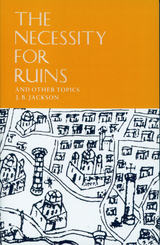
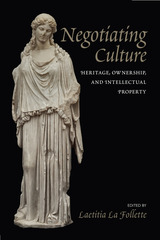
This provocative collection of essays—a series of case studies in cultural ownership by scholars from a range of fields—explores issues of cultural heritage and intellectual property in a variety of contexts, from contests over tangible artifacts as well as more abstract forms of culture such as language and oral traditions to current studies of DNA and genes that combine nature and culture, and even new, nonproprietary models for the sharing of digital technologies. Each chapter sets the debate in its historical and disciplinary context and suggests how the approaches to these issues are changing or should change.
One of the most innovative aspects of the volume is the way each author recognizes the social dimensions of group ownership and demonstrates the need for negotiation and new models. The collection as a whole thus challenges the reader to reevaluate traditional ways of thinking about cultural ownership and to examine the broader social contexts within which negotiation over the ownership of culture is taking place.
In addition to Laetitia La Follette, contributors include David Bollier, Stephen Clingman, Susan DiGiacomo, Oriol Pi-Sunyer, Margaret Speas, Banu Subramaniam, Joe Watkins, and H. Martin Wobst.

Over the past three hundred years New England's landscape has been transformed. The forests were cleared; the land was farmed intensively through the mid-nineteenth century and then was allowed to reforest naturally as agriculture shifted west. Today, in many ways the region is more natural than at any time since the American Revolution. This fascinating natural history is essential background for anyone interested in New England's ecology, wildlife, or landscape.
In New England Forests through Time these historical and environmental lessons are told through the world-renowned dioramas in Harvard's Fisher Museum. These remarkable models have introduced New England's landscape to countless visitors and have appeared in many ecology, forestry, and natural history texts. This first book based on the dioramas conveys the phenomenal history of the land, the beauty of the models, and new insights into nature.

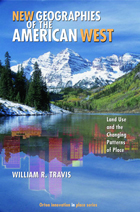

From the earliest memorials used by Native Americans to the elaborate structures of the present day, Richard Veit and Mark Nonestied use grave markers to take an off-beat look at New Jersey’s history that is both fascinating and unique.
New Jersey Cemeteries and Tombstones presents a culturally diverse account of New Jersey’s historic burial places from High Point to Cape May and from the banks of the Delaware to the ocean-washed Shore, to explain what cemeteries tell us about people and the communities in which they lived. The evidence ranges from somber seventeenth-century decorations such as hourglasses and skulls that denoted the brevity of colonial life, to modern times where memorials, such as a life-size granite Mercedes Benz, reflect the materialism of the new millennium. Also considered are contemporary novelties such as pet cemeteries and what they reveal about today’s culture. To tell their story the authors visited more than 1,000 burial grounds and interviewed numerous monument dealers and cemetarians.
This richly illustrated book is essential reading for history buffs and indeed anyone who has ever wandered inquisitively through their local cemeteries.

Published in Cooperation with the Lord & Schryver Conservancy
Lord & Schryver, the first landscape architecture firm founded and operated by women in the Pacific Northwest, designed more than two hundred gardens in Oregon and Washington, including residential, civic, and institutional landscapes. Elizabeth Lord and Edith Schryver met as young women and in 1929 established their highly successful firm in Salem; their work is acknowledged as one of the milestones in the history of garden design in the Northwest and beyond. Theirs is the only Oregon firm recognized in Pioneers of Landscape Architecture, compiled by the National Park Service. The Cultural Landscape Foundation describes them as “consummate professionals in the broadest sense, as they worked to raise the profile of landscape architects by involving an audience beyond their clients. Their work represented a transition from a formal symmetrical style of garden design to one which responded in a distinctive way to the unique features of Northwest climate, soil, topography, and plant material.”
Gaiety Hollow, their purpose-built Salem home, garden, and studio, is now owned by the Lord & Schryver Conservancy and is open to the public. The conservancy has lovingly restored the gardens at Gaiety Hollow according to Lord & Schryver’s original plans. They have also restored and now maintain the gardens at Deepwood, a former residence that is now a public park.
Students of landscape architecture, garden design, Pacific Northwest history, ornamental horticulture, and general readers who are interested in the contributions of women to once male-dominated professions will find inspiration in these pages.
Learn more about Elizabeth Lord and Edith Schryver at www.lordschryver.org
READERS
Browse our collection.
PUBLISHERS
See BiblioVault's publisher services.
STUDENT SERVICES
Files for college accessibility offices.
UChicago Accessibility Resources
home | accessibility | search | about | contact us
BiblioVault ® 2001 - 2025
The University of Chicago Press









